DeBrief: The Reno City Council Primary Election Results
A statistical examination of the outcome plus the latest in Reno urban development
We’ve entered that brief summer lull when very few City meetings are scheduled. Reno City Council doesn’t meet again until July 24, and the July 3 Planning Commission meeting has been cancelled, so at this point, that body won’t meet again until July 17. To see what meetings are scheduled in the meantime, you can view the Upcoming Meetings page here and the full City of Reno Calendar here.
That hiatus means I’ll have more space over the next few weeks to devote to some big picture analysis. And today, that begins with discussing the 2024 primary election results for Reno City Council, which Council certified on June 21. You can view all results on the Washoe County Registrar of Voters or Secretary of State websites.
Let me begin by saying congratulations to those who are moving forward to the general election and kudos to everyone who ran for office. Mounting a run is no small undertaking, and is to be applauded no matter the outcome. Thanks, too, to all residents who participated in the democratic process by exercising your right to vote. I suspect that due to the subject matter of the Brief, a high percentage of those reading this were among those who took the time to do so. So pat yourself on the back.
As you view the results below, remember that the two candidates who received the most votes in the primary election move on to the general election in November. I’m going to use the graphics from the County Registrar of Voters website to display the results for each ward, since they clearly depict the numbers of voters and percentages of the vote that each candidate earned.
NOTE: To find how many registered voters live in each City Ward, I consulted the Washoe County Registrar of Voters Reports & Statistics webpage, where you can download the District Report. I’ll just attach pages 39-40 related to the Reno City Wards below (it also includes a breakdown by political party, if that interests you). To determine the voter turnout in each ward, I divided the number of counted votes by the number of the ward’s registered voters.
After listing the results, I’ll share a few thoughts about what we can glean from them.
Reno City Council, Ward 1
Total number of Reno Ward 1 registered voters: 24,455
Turnout of Reno Ward 1 registered voters: 14.5%
A total of 3,536 residents of the reconfigured Ward 1 voted in the primary. Of those, appointed Councilmember Kathleen Taylor received 29.13% of the vote, with 1,030 people voting for her and 2,506 voting for someone else. In second place was Frank Perez with 24.1% of the vote (852), a mere 15 votes ahead of Lily Baran.
Reno City Council, Ward 3
Total number of Reno Ward 3 registered voters: 22,002
Turnout of Reno Ward 3 registered voters: 15.8%
A total of 3,471 residents of the reconfigured Ward 3 voted in the primary. Of those, appointed Councilmember Miguel Martinez received 49.52% of the vote, with 1,719 people voting for him and 1,752 voting for someone else. In second place was Denise Myer with 21.55% of the vote (748 votes).
Reno City Council, Ward 5
Total number of Reno Ward 5 registered voters: 32,254
Turnout of Reno Ward 5 registered voters: 27.6%
A total of 8,899 residents of the reconfigured Ward 5 voted in the primary. Of those, current At-Large elected Councilmember Devon Reese received 37.14% of the vote, with 3,305 people voting for him and 5,594 voting for someone else. In second place was Brian Cassidy with 27.45% of the vote (2,443 votes). The two other candidates, Sheila Browning-Peuchaud (18.1% or 1,611 votes) and Tara Webster (17.31%, or 1,540 votes) made strong showings.
Reno City Council, Ward 6
Total number of Reno Ward 6 registered voters: 33,104
Turnout of Reno Ward 6 registered voters: 22.05%
A total of 7,300 residents of the new Ward 6 voted in the primary, which featured no sitting Councilmembers for this ward. Of those, Brandi Anderson received 43.3% of the vote, with 3,161 of the ward’s voters selecting her. In second place was Tom Heck with 14.78% of the vote (1,079 votes). But several other candidates earned more than 13% of the vote, making this race a relatively close one, too.
As a reminder, the terms of Ward 2 Councilmember Naomi Duerr (who is not proceeding to the general election for State Senate District 15), Ward 4 Councilmember Meghan Ebert, and Mayor Hillary Schieve will expire in 2026, when all three of those seats will be up for election.
Thoughts on the Primary Election Results
So what observations can be made regarding the results of the Reno City Council primary election? I find two aspects particularly striking.
Observation #1: Voter turnout was incredibly low.
As I reported in my May 25 edition of the Brief, local turnout for primaries has always been low, but this year’s turnout appears to fall far below both the 2020 and 2022 numbers. The highest turnout this year occurred for the Ward 5 race, with a 27.6% turnout by registered voters. But Ward 1 saw a meager 14.5% turnout.
Add up the numbers, and a total of 23,206 residents across all four wards with active races participated in the primary elections for Reno City Council. That’s out of a total of 111,815 registered voters in those four wards, for an overall turnout of 20.8%.
As someone who has spent more than three years trying to encourage more participation in local government via this Brief, I find those numbers rather discouraging, no matter how happy anyone might be with the outcomes. I’m not sure why such a low percentage of qualified residents chose not to participate, and I’m certainly reflecting—and I hope you are, too—on what we can do as a community to change that. These are nonpartisan races, so every registered voter, no matter their party, is eligible to vote in their own ward.
What’s your explanation for the low voter turnout in the primary elections for Reno City Council?
I’ve put together a little poll where you can select the main reason you think the turnout of registered voters was so low. (Obviously we’re all speculating here, since I don’t have the personal capacity to poll actual non-voters—but if you happen not to have voted in the local primary, please feel free to share your reasons!)
If your explanation falls under “Other,” feel free to write it in the comments at the end of the post as well as your thoughts on what can be done to improve the situation.
The poll should update as subscribers to the Brief (free or paid) participate, and we can discuss the results next time (and in the comments).
Observation #2: Seated Councilmembers up for election did not receive overwhelming support.
While all three sitting Councilmembers up for election to represent Wards 1, 3, and 5 did receive more votes in their races than any other individual candidate, no sitting Councilmember received more than 50% of the vote in their ward (Ward 3 Councilmember Miguel Martinez came closest, with 49.52%).
This year was more confusing than usual, obviously, with many residents voting in a different ward than the one in which they currently reside (and a few sitting Councilmembers running for a different seat than the one they currently hold); however, because City Council elections are ward-only (for the six wards), each ballot made the options for each voter abundantly clear. As a result, it’s safe to say that these numbers reveal a great deal about public sentiment toward who is representing residents now, at least within the wards they will be charged with representing.
And that intra-ward satisfaction is key. The redistricting that was in place for these primaries and will take full effect upon the finalization of the general election results (you can compare the old and new maps here) accomplished a few important things:
By eliminating the At-Large City Council seat and creating a sixth City ward, it reinforced the need for Councilmembers to effectively represent a geographically defined group of people who are likely to share a wide swath of unique interests and concerns due to their common physical context.
It removed the longstanding extension of multiple ward boundaries into the downtown area, instead concentrating what is typically considered “downtown” into Ward 1 (and shifting the majority of that ward’s neighborhood constituency from the Old Southwest to the Northeast). Advocates of the former configuration claimed that connecting multiple wards to downtown was the only way to ensure that more Councilmembers would prioritize what happens there. Is that true, and do they need to? I think that’s one of the conversations we can and should have.
We’re likely to have a little break here before local campaigning starts up again in earnest. After all, November is more than four months away, and we live in the age of the short attention span. I do hope that when the local political machinery grinds back into gear, we can all encourage extensive and robust discussion of the issues that matter to each individual ward, in order for residents to make the most informed decisions about who will best represent them on City Council for the next four years.
Now let’s move on to a few announcements and links to some of the latest news.
Washoe County Housing Affordability Package 2.5
Last week I learned that Washoe County is holding two virtual community workshops this week—on Monday, June 24 from 5-6pm and Wednesday, June 26 from 5-6pm—to discuss possible changes to Washoe County’s housing regulations. (And I see that they just added an in-person meeting on July 1, so keep checking that link for updates.)
A “Quick Info Guide” can be found here, and a redlined document with proposed changes here. According to the Info Guide, “these changes aim to support diverse housing by establishing new housing use types, creating standards for them, and making necessary modifications to support the development of those housing types.”
[Note: These changes would apply only to properties in unincorporated Washoe County, as explained on the Washoe County Planning Department website here.]
The proposed changes are detailed, and should be read in their entirety to understand. Some involve potential removal of certain two-story height limits in North Valleys, Southwest Truckee Meadows, and Spanish Springs; the addition of triplex, quadplex, multi-family minor, multi-family major, guest quarters, cottage court, and bunkhouse “use types” with establishment or modification of how they are allowed in different regulatory zones; creation or modification of code requirements for detached accessory structures, guest houses, cottage courts, and bunkhouses; and much more.
Here’s a helpful overview of the proposed changes from This is Reno:
“Washoe looks to add ‘missing middle’ housing with code changes” (Kristen Hackbarth, This is Reno, 6/21/24)
I wrote to Senior Planner Kat Oakley for a little more context and received this response, explaining that these proposals stem in part from the recent adoption of the County’s new master plan, and in part from the same state legislation that the City of Reno was responding to in their own recent housing initiatives:
“These amendments were first broadly identified on November 14th of last year, at a Board of County Commissioner’s meeting (BCC). Upon adoption of the new master plan Envision Washoe 2040, which prioritizes increasing housing diversity in Washoe County, the BCC also identified a series of 4 housing-related amendments to support affordable and attainable housing in Washoe County. This is part of package 2, which was split in half, which is why it’s called “package 2.5.” Here is a link to the staff report on that item: https://washoe-nv.legistar.com/gateway.aspx?M=F&ID=b6a1ef42-a5ca-4587-8868-ae3e540b3a93.docx. Additionally, last year the state legislature adopted AB213, which directs us to seek out ways to increase affordable housing and housing supply in Washoe County. All these elements have led to Washoe County Planning working on the proposed housing amendments, as well as packages 1 and 2 which are already adopted or in the public hearing process.”
In a follow-up email to me, Oakley sent this clarification:
“….these amendments are at stage 1 of public outreach. We have drafted something based on the master plan and on general direction provided to us, and now we are taking it to the public to get input. This is all prior to the official public hearing process for adoption, and what will be brought to public hearing is not yet finalized. We welcome people reaching out to engage with us and want to hear what they have to say.”
You can find all the details about these meetings (included more that might be scheduled) on the Washoe County Neighborhood Meetings page here.
News Round-Up: The Latest in Local Development
A few development-related items made the news this week, beginning with an issue I started hearing about from residents some time ago, so I’m happy to see it covered:
Residents of Somersett lodge complaints about Toll Brothers
“Somersett residents outraged at developer over subdivision construction” (Bob Conrad, This is Reno, 6/19/24)
Excerpt: “Somersett residents at The Cliffs development say the City of Reno has signed off on incomplete and ‘fraudulent’ work by Toll Brothers, the builder that constructed the homes in their community. The Cliffs is a subdivision within Somersett comprising about 200 homes. Zillow lists homes at $1.4 million in the community ‘known for its stunning mountain views and rolling topography.’”
A public restroom for City Plaza
Video: “New ‘Portland Loo’ public restroom opens at City Plaza” (Bob Conrad, This is Reno, 6/20/24)
As Bob Conrad reports, this is the City’s third “Portland Loo,” following installation of two others at Brodhead Memorial Park and John Champion Park.
Reno News & Review Best of Northern Nevada 2024
Lastly, I was surprised and honored last week to learn that I’m one of the finalists in the Reno News & Review Best of 2024 in the category of Best Local Author, which you can find in the “Personalities” section here.
I’m not much for self-promotion, but if you enjoy the Brief and would like more people to read it, voting for me is a great way to raise its profile in the community. I also invite you to familiarize yourself with my other publications, including my book, Reno’s Big Gamble: Image and Reputation in the Biggest Little City, and other writing.
You can visit the voting site at https://vote.renonr.com/ and I believe you need to register with you email and vote for multiple categories in order for your vote to count, so consider this a great way to support many of your local favorites, from restaurants and parks to activists and podcasts. I and my fellow nominees greatly appreciate your consideration! Voting closes on Sunday, July 21.
Have a wonderful week, stay cool, and please take care of yourselves and each other.
Be sure to check out my Citizen Guide for helpful resources and links for anyone hoping to become more informed and engaged in issues related to urban development (& more) in Reno.
As always, you can view this and prior newsletters on my Substack site, subscribe to receive each new edition in your email inbox, and follow the Brief (and contribute to the ongoing conversation) on X, Facebook & Instagram. If you feel inspired to support my writing and research with a financial contribution, you can sign up for a paid subscription through my Substack site or contribute to my Venmo account at @Dr-Alicia-Barber or via check to Alicia Barber at P.O. Box 11955, Reno, NV 89510. Thanks so much for reading, and have a great week.

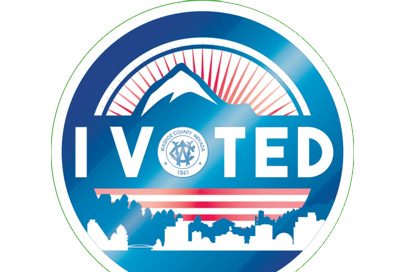


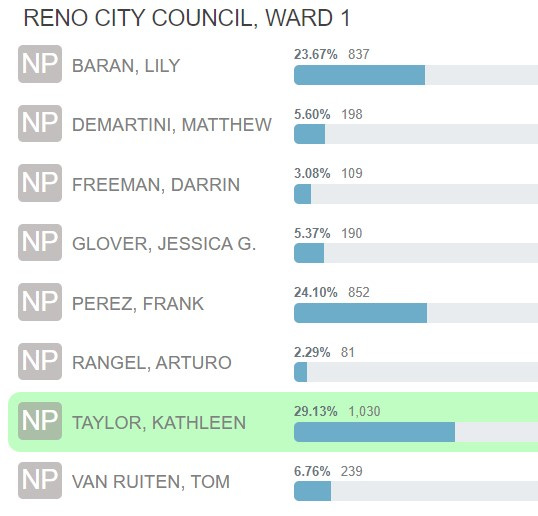

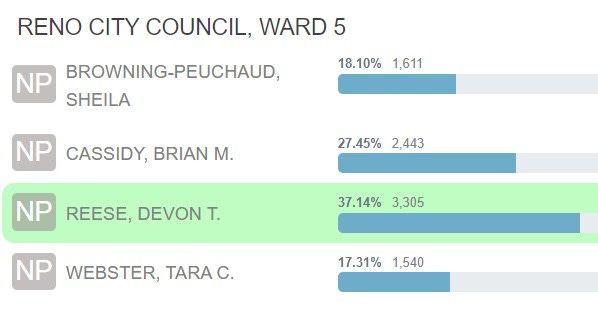
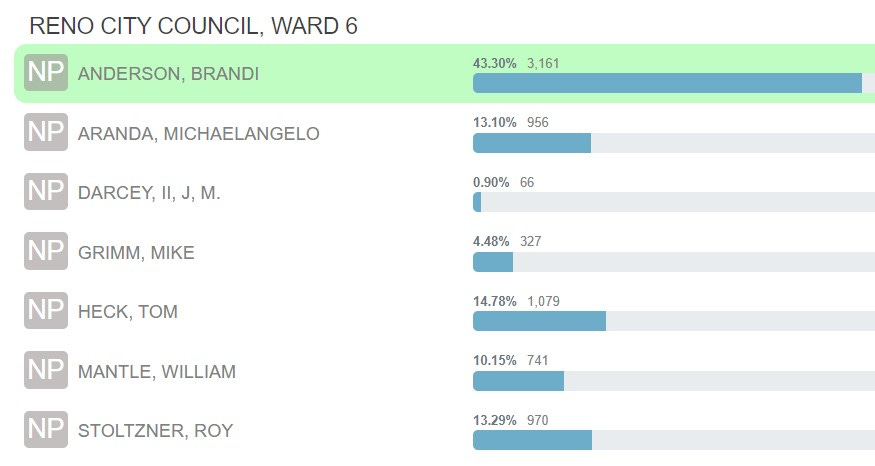

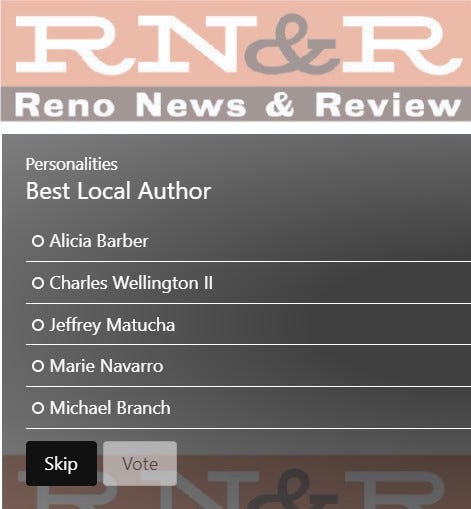
I answered Apathy/irrelevance meaning the irrelevance part. I don't think people are apathetic. They are concerned about local attitudes and decisions affecting their daily lives. However, they don't believe voting and attending public meetings will change anything. As many readers know, the opposite is the case. A shift in voting by a handful of our neighbors last week has determined the future. I believe there must be a coordinated and well funded effort to increase community engagement online and off.
I'm so curious about those who are responding "Other" in the poll about the low voter turnout. What do those encompass, I wonder? "Meant to vote, but forgot"? "Hated all the options"?